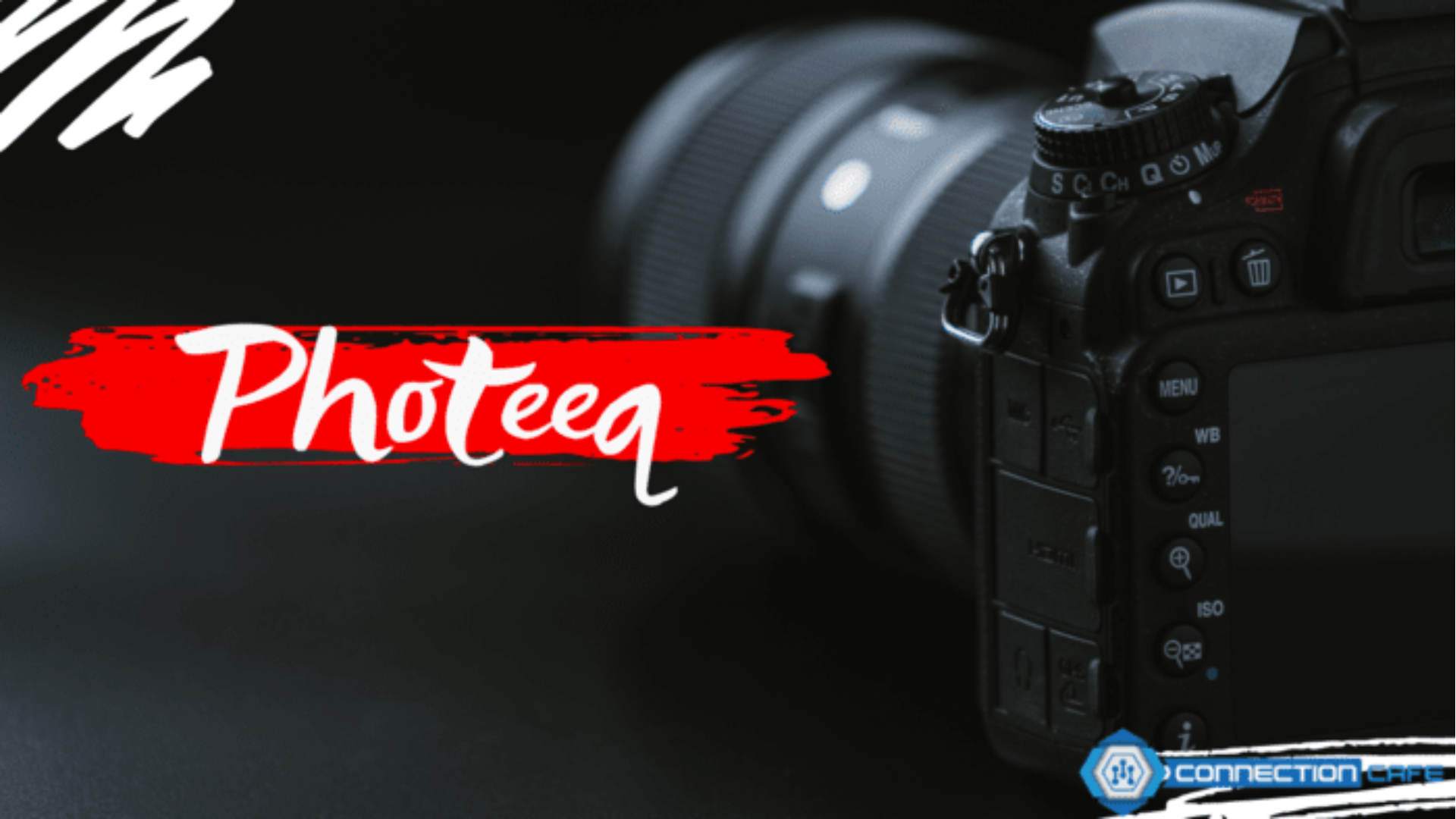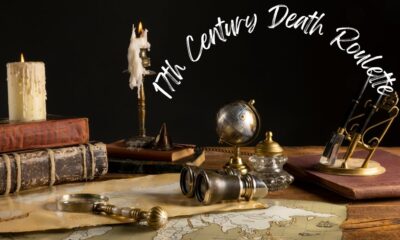GENERAL
Creative Inspiration with Photeeq Photo Ideas for Every Occasion

Photeeq is a photo management and editing plugin known for its intuitive design and creative power. For aspiring photographers, bloggers, marketers, and even casual users, photeeq photo ideas can unlock countless possibilities for stunning visual storytelling. The platform enhances workflows through streamlined editing, color correction, and composition tools.
With photography being a core component of digital content, having a versatile tool like Photeeq can significantly improve image quality. It allows you to express creativity through photo series, thematic sets, and social media content. This article explores engaging ways to utilize Photeeq to create unforgettable photos.
Portrait Photography with Photeeq Photo Ideas
Portraits are one of the most popular categories in photography. With Photeeq, you can elevate your portraits using specific filters, lighting corrections, and advanced features that highlight facial expressions, emotions, and details.
Consider ideas such as:
-
Candid street portraits with natural light enhancements
-
Black and white artistic portraits for moody effects
-
Environmental portraits capturing people in their daily context
-
Close-up shots enhanced with Photeeq’s clarity tools
Combining high-resolution images with Photeeq’s filters can emphasize personality and uniqueness in your subjects. Portraits become more than faces—they tell stories.
Family and Lifestyle Photos Made Easy
Capturing real-life moments with loved ones is a timeless treasure. Photeeq enables lifestyle photographers to apply vintage filters, warm tones, and vibrant saturation settings to highlight emotion.
Here are a few family photo ideas:
-
Golden hour family portraits in a park
-
Indoor candid breakfast or bedtime moments
-
Outdoor playtime with natural filters
-
Pet and child bonding photos with softening presets
Use Photeeq to create photo albums, edit RAW shots for warmth and clarity, and share emotionally rich moments online or in printed keepsakes.
Landscape Photography with Photeeq Enhancements
Landscapes thrive when colors and contrasts are emphasized. Whether it’s mountains, forests, beaches, or cityscapes, Photeeq provides features to bring out textures, details, and dynamic ranges.
Try these Photeeq photo ideas for landscapes:
-
Sunset and sunrise edits with color grading presets
-
Panorama enhancements using sharpening and sky contrast tools
-
HDR compositions for a layered effect
-
Desaturated city scenes for a dramatic urban aesthetic
Landscape photography benefits from Photeeq’s ability to balance highlights and shadows, making your scenic shots pop.
Product Photography and Creative Marketing Shots
If you’re involved in e-commerce, blogging, or digital marketing, product photography is crucial. Photeeq offers color correction, background blurring, and lighting adjustments to produce professional results.
Creative product photo ideas include:
-
Flat lay compositions with branded props
-
Minimalist single-object focus shots
-
Creative shadows and reflective surfaces
-
Before-and-after edits showcasing transformations
With Photeeq, your photos can align with your brand aesthetic, enhancing online store visuals, social posts, and marketing materials.
Black and White Photo Concepts for Impact
Black and white images evoke emotion and timelessness. Photeeq provides excellent monochrome filters and high contrast settings to amplify the mood.
You can try:
-
Dramatic black and white street photography
-
High-contrast shadow play for architectural shots
-
Timeless wedding moments in monochrome
-
Conceptual art portraits using minimal tones
The absence of color shifts attention to form, light, and emotion—ideal for impactful storytelling.
Seasonal Photeeq Photo Ideas
Seasons change, and so should your photography themes. Each season offers new lighting, colors, and scenes that can be creatively enhanced with Photeeq’s dynamic editing capabilities.
Spring:
-
Blossoming gardens and macro flower shots
-
Light pastel filters and soft vignettes
Summer:
-
Bright beach days and golden sunsets
-
Vibrant saturation for tropical feels
Autumn:
-
Falling leaves with rich orange-brown tones
-
Cozy indoor lifestyle shots with muted warmth
Winter:
-
Snow landscapes with high contrast whites
-
Cold blue tones and dramatic lighting
With Photeeq, you can create year-round content that’s visually aligned with the time of year and your narrative tone.
Event Photography and Photeeq Adjustments
Event photography—whether it’s weddings, corporate functions, or birthdays—requires versatility. Lighting conditions often vary, and candid moments need immediate attention. Photeeq’s presets and corrections let you fix lighting inconsistencies and emphasize the emotion in each moment.
Event photo ideas to consider:
-
Dance floor action shots with motion blur reduction
-
Emotional moments like vows, toasts, or reunions
-
Group shots with even skin tone adjustments
-
Food and decor close-ups with shallow depth-of-field
Photeeq helps streamline the post-processing phase for quick delivery of polished albums.
Travel Photography for the Adventurous Soul
Travel and adventure photography allows for some of the most varied and exciting photo sets. Photeeq lets you quickly edit on-the-go shots from smartphones or DSLRs into vivid travel memories.
Creative travel photo ideas include:
-
Capturing cultural markets or street vendors
-
Iconic landmarks at different times of day
-
Motion shots from vehicles or during hikes
-
Local food or street art close-ups
Make your travel photos magazine-worthy using Photeeq’s presets for vibrance, clarity, and structure.
Food Photography for Social Media and Blogs
Food photography is a booming category on social media and culinary blogs. With Photeeq, you can enhance color, texture, and composition to make dishes look irresistible.
Top food photo ideas:
-
Overhead shots with complementary color palettes
-
Close-ups of desserts or textured dishes
-
Action shots of pouring, slicing, or serving
-
Bright background setups with soft natural lighting
Utilizing Photeeq’s features allows you to maintain consistency in your food photography series or brand identity.
Conceptual and Artistic Photography Projects
For more advanced users or artists, Photeeq supports conceptual photography with features that help manipulate tone, layering, and effects.
Some artistic photo concepts include:
-
Surreal double exposures
-
Minimalism with extreme negative space
-
Storytelling sequences with visual progression
-
Experimental lighting using gels or LEDs
The artistic freedom with Photeeq tools allows users to push the boundaries of creativity and convey complex emotions or ideas.
Building a Themed Photo Series
Creating a themed photo series can be a powerful way to express a narrative or build a professional portfolio. Photeeq helps ensure consistency in tone, lighting, and color grading across all your images.
Examples of themed series include:
-
A “day in the life” documentary-style shoot
-
Urban exploration of hidden locations
-
Seasonal fashion looks
-
Weekly street photography journal
The key is to develop a visual style and apply Photeeq’s editing presets uniformly across your series for a cohesive result.
Using Photeeq for Photo Journals and Blogs
Combining photos with storytelling can result in powerful photo journal content. Whether documenting travel, personal experiences, or creative projects, Photeeq aids in delivering consistent, engaging visuals.
Tips for photo journals:
-
Start with a central theme or narrative
-
Capture a mix of wide and detailed shots
-
Use Photeeq to unify the tone of all visuals
-
Add short captions or narratives alongside photos
Journaling with images connects readers emotionally and visually, adding authenticity and personality to your online presence.
Conclusion
Photeeq photo ideas open a world of possibilities for photographers of all levels. From casual smartphone users to professional artists, Photeeq’s editing and enhancement tools empower creators to transform ordinary images into extraordinary visual content. By exploring themes such as portraits, landscapes, events, food, and conceptual art, users can curate impactful stories that resonate across platforms and audiences. Whether you’re crafting a social media brand or capturing family memories, Photeeq provides the creative edge needed in today’s visual world.
ALSO READ:Homarazzi: Your Ultimate Guide To Glamorous Photography
FAQs
What is Photeeq used for?
Photeeq is a photo editing and organizing plugin that helps users enhance, correct, and manage their digital images with ease.
Can beginners use Photeeq photo ideas effectively?
Absolutely. Photeeq’s intuitive interface and ready-made presets make it suitable for beginners seeking to improve their photography.
Is Photeeq suitable for professional photography?
Yes. Many professionals use Photeeq to streamline editing, maintain consistency, and enhance photo storytelling.
Can Photeeq be used on mobile devices?
While primarily used as a plugin for desktop editing, some features may be integrated or compatible with mobile platforms through connected tools.
How do Photeeq photo ideas help with branding?
By using consistent editing styles and visual storytelling, Photeeq photo ideas can help establish a strong, recognizable visual identity for brands.
GENERAL
Pedro Vaz Paulo:Visionary Leader in Busines Innovation & Strategy

Pedro Vaz Paulo is a recognized name in the world of business strategy, entrepreneurship, and innovation. Known for his transformative work across various industries, Pedro Vaz Paulo has earned a reputation as a visionary thinker and strategic advisor. With decades of experience guiding companies through change, growth, and digital transformation, he is often sought after for his insight into organizational development and innovation-driven success.
His work transcends traditional business consultancy. Pedro is celebrated for combining strategic foresight with hands-on execution, enabling businesses to not only envision new futures but also realize them.
Background and Early Career of Pedro Vaz Paulo
Pedro Vaz Paulo’s journey into the world of business strategy began with a strong academic foundation. With a background in economics, management, or a related field (depending on actual public records), Pedro demonstrated early aptitude for systems thinking and leadership. He studied both the theoretical frameworks and real-world business environments that shaped his understanding of markets, operations, and strategic growth.
His early career was marked by positions in consultancy firms and strategic advisory roles where he helped organizations refine their market positioning and operational effectiveness. These experiences helped him build a nuanced understanding of how organizations work — from the boardroom to the ground level.
Pedro Vaz Paulo’s Impact on Strategic Consulting
Pedro Vaz Paulo carved out a niche for himself in the strategic consulting landscape by focusing on long-term value creation. Unlike many consultants who prioritize short-term KPIs, Pedro emphasizes sustainable business models that align leadership vision with execution.
His consulting methodology often includes:
-
Organizational diagnostics
-
Strategic scenario planning
-
Business model innovation
-
Leadership coaching
-
Digital transformation strategies
This holistic approach allows clients to not only solve immediate business problems but also become more resilient and future-ready.
Focus on Innovation and Change Management
One of the core pillars of Pedro Vaz Paulo’s work is innovation. He believes that innovation is not just about new technology — it’s about creating new value.
In his consulting work, Pedro often leads innovation sprints, transformation roadmaps, and collaborative design thinking workshops to help companies think outside the box. He empowers teams to prototype, test, and scale new ideas that align with both customer needs and strategic goals.
Moreover, he places a strong emphasis on change management — ensuring that innovation is implemented with stakeholder alignment, internal communication, and cultural readiness. Change, according to Pedro, is only successful when people are at the center of the transformation process.
Leadership Development and Executive Coaching
Pedro Vaz Paulo is also recognized for his leadership development initiatives. He works closely with senior executives to enhance their decision-making capabilities, leadership presence, and strategic thinking.
His leadership coaching is rooted in emotional intelligence, systems leadership, and purpose-driven growth. Whether working with CEOs, startup founders, or board members, Pedro helps leaders gain clarity, focus, and resilience in an increasingly complex business landscape.
Key themes in his leadership programs include:
-
Visionary leadership
-
Ethical decision-making
-
Team empowerment
-
Adaptive thinking in volatile environments
Digital Transformation and Technological Adoption
In today’s digital economy, Pedro Vaz Paulo stands out as a guide for companies navigating technological disruption. He helps organizations assess their digital maturity, identify transformation opportunities, and adopt emerging technologies.
His work in digital transformation spans across:
-
E-commerce and platform strategy
-
Cloud integration and data analytics
-
Automation and artificial intelligence
-
Cybersecurity and governance
-
Customer-centric digital design
Rather than promoting tech for tech’s sake, Pedro ensures that digital initiatives are linked to business value and customer impact.
Thought Leadership and Public Speaking
Pedro Vaz Paulo is more than a consultant — he’s a thought leader. He regularly contributes to business forums, industry panels, and academic institutions where he shares insights on strategy, innovation, and organizational transformation.
He speaks on topics such as:
-
The future of leadership
-
Business model disruption
-
Navigating complexity in uncertain times
-
Building innovation-driven cultures
-
The intersection of purpose and profit
Pedro’s thought leadership is grounded in both academic rigor and practical experience, making his content relevant to practitioners, scholars, and executives alike.
Contributions to Academic and Professional Communities
Pedro Vaz Paulo often collaborates with universities, business schools, and professional associations. Whether through lectures, case studies, or mentorship programs, he is committed to fostering the next generation of strategic thinkers and business innovators.
Some key contributions include:
-
Guest lectures in MBA and executive programs
-
Published articles and whitepapers on strategic topics
-
Mentorship to young entrepreneurs and startups
-
Participation in academic-industry research projects
His academic engagement demonstrates a lifelong commitment to learning and sharing knowledge.
Pedro Vaz Paulo’s Business Philosophy
Pedro Vaz Paulo believes that business is ultimately a vehicle for positive change. His philosophy blends purpose with performance, advocating for companies to pursue profits while making meaningful contributions to society.
At the core of his approach are values like:
-
Integrity
-
Long-term thinking
-
Stakeholder capitalism
-
Sustainability
-
Collaboration
He encourages businesses to think of themselves as part of a larger system — economically, socially, and environmentally — and to take actions that reflect this interconnectedness.
Industry Sectors Pedro Vaz Paulo Has Influenced
Throughout his career, Pedro Vaz Paulo has worked across multiple sectors, bringing customized strategic insights to each. These sectors may include (based on real affiliations):
-
Technology and IT Services
-
Healthcare and Life Sciences
-
Financial Services and Banking
-
Retail and E-commerce
-
Education and EdTech
-
Public Sector and Nonprofits
His cross-industry experience allows him to identify transferable best practices and bring fresh perspectives to every engagement.
Why Pedro Vaz Paulo Is Considered a Strategic Visionary
Pedro is often referred to as a visionary because of his ability to see beyond immediate trends and guide clients toward long-term, systemic growth. He doesn’t just react to market changes — he anticipates them.
His visionary thinking includes:
-
Predicting shifts in consumer behavior
-
Advising on strategic pivot points
-
Integrating ESG (environmental, social, governance) priorities into business strategy
-
Fostering resilience through scenario planning
-
Designing future-ready business models
By helping companies align their values with their strategy, Pedro ensures they thrive in both profit and purpose.
Testimonials and Case Studies
While individual client details may be confidential, Pedro Vaz Paulo’s influence is visible in numerous success stories. From startups that scaled globally to corporations that restructured and turned profitable, his work consistently delivers results.
Common themes from clients include:
-
“Pedro helped us clarify our vision.”
-
“We pivoted and found product-market fit.”
-
“Our team became more aligned and productive.”
-
“We executed digital transformation with confidence.”
These testimonials highlight his ability to connect strategy with execution and vision with action.
Conclusion
Pedro Vaz Paulo is more than a business strategist — he is a catalyst for transformation. His work spans industries, technologies, and leadership tiers, but his core mission remains the same: to help organizations grow with purpose, adapt to change, and lead with integrity.
Whether guiding a startup through its first round of funding or helping a legacy business embrace innovation, Pedro brings a rare combination of foresight, empathy, and strategic rigor. In an era defined by uncertainty and rapid change, his insights and leadership continue to shape the future of business.
ALSO READ:The Versatility and Benefits of General Studies Degrees
FAQs
What is Pedro Vaz Paulo known for?
Pedro Vaz Paulo is known for his expertise in business strategy, innovation, leadership development, and digital transformation.
Is Pedro Vaz Paulo a public speaker?
Yes, he frequently speaks at conferences, industry panels, and universities on leadership, innovation, and strategy.
What industries has Pedro Vaz Paulo worked in?
He has worked across technology, finance, healthcare, retail, education, and the public sector.
Does Pedro Vaz Paulo work with startups?
Yes, he provides mentorship and strategic guidance to startups, helping them scale and build sustainable business models.
How can I connect with Pedro Vaz Paulo?
You can find more about him through professional networks like LinkedIn, business publications, or industry events where he speaks.
GENERAL
Losing Something as a Blessing: Finding Growth and Gratitude in Loss

Loss is an inevitable part of life. Whether it’s losing a cherished possession, a job, a relationship, or even an opportunity, the experience of loss can be deeply painful and disorienting. However, as difficult as it may be, losing something often comes with unexpected benefits—lessons that can transform our lives for the better. The idea that “losing something as a blessing” may seem paradoxical at first, but when we delve deeper into the nature of loss and its impact on our personal growth, it becomes clear that loss can be a powerful catalyst for positive change.
In this article, we will explore how losing something can be a blessing in disguise. We’ll discuss the emotional journey that accompanies loss, the life lessons that emerge from it, and how adopting a mindset of gratitude and acceptance can turn loss into an opportunity for growth. Through examples, psychological insights, and practical strategies, we will uncover the hidden blessings that often accompany loss, providing a new perspective on this universal human experience.
Understanding the Emotional Journey of Loss
The Initial Impact of Loss
The first response to losing something important is often shock, disbelief, or denial. This initial stage of grief can be overwhelming, as we struggle to comprehend and accept the reality of what has happened. Whether the loss is material, such as a treasured object, or intangible, like the end of a relationship, the emotional impact can be profound.
During this stage, it is common to feel a sense of emptiness, as if a part of ourselves is missing. This feeling is not just psychological but can manifest physically, with symptoms such as fatigue, loss of appetite, and difficulty concentrating. The brain and body are processing the loss, and it takes time for the mind to adjust to the new reality.
Moving Through Grief and Acceptance
As the initial shock begins to wear off, feelings of sadness, anger, or frustration often surface. This is a natural part of the grieving process, as we begin to confront the emotions associated with our loss. It is important to allow ourselves to experience these emotions fully rather than suppressing or denying them.
Over time, as we work through these feelings, we begin to reach a stage of acceptance. This does not mean that the pain of loss disappears, but rather that we come to terms with it and find a way to move forward. Acceptance allows us to start seeing the situation from a different perspective, opening the door to recognizing the potential blessings hidden within the loss.
You may also like: The Grand Duke is Mine Spoilers Twists and Turns in Love and Royalty
The Hidden Blessings in Loss
Lessons in Detachment and Letting Go
One of the most significant blessings that can come from loss is the lesson of detachment. Often, we become attached to our possessions, relationships, and even our identities, believing that they define who we are. When we lose something we hold dear, we are forced to confront these attachments and reevaluate our sense of self.
Detachment does not mean indifference or a lack of caring. Instead, it involves recognizing that our worth and happiness are not solely dependent on external factors. Losing something allows us to practice letting go, freeing ourselves from the need to control or cling to things that are ultimately impermanent. This can lead to a greater sense of inner peace and resilience, as we learn to navigate life with a lighter heart and a more open mind.
Example: A Lost Job Leading to New Opportunities
Consider the example of someone who loses their job unexpectedly. At first, the loss can feel devastating, triggering fears about financial stability, self-worth, and the future. However, as they move through the initial stages of grief and begin to accept their situation, they may start to see new opportunities that were previously obscured by the security of their old job.
Perhaps the loss of the job encourages them to pursue a passion they had set aside, leading to a more fulfilling career. Or maybe it pushes them to develop new skills, network with different people, or explore alternative industries. In this way, what initially seemed like a misfortune can ultimately become a catalyst for personal and professional growth.
Gaining Clarity and Perspective
Another blessing that can emerge from loss is the clarity and perspective it provides. When we lose something, we are often compelled to take a step back and reassess our priorities, values, and goals. This process of reflection can lead to important realizations about what truly matters to us, helping us align our lives more closely with our core values.
Loss can strip away the distractions and superficial concerns that may have been occupying our attention, allowing us to focus on what is truly meaningful. It can also help us appreciate what we still have, fostering a deeper sense of gratitude and contentment.
Example: The End of a Relationship Bringing Personal Growth
The end of a significant relationship, whether through a breakup, divorce, or estrangement, is often one of the most painful types of loss. However, this loss can also be a powerful teacher. It can prompt us to examine our behavior, communication patterns, and emotional needs, leading to greater self-awareness and personal growth.
For example, after the end of a long-term relationship, a person might realize that they had been compromising their own needs or values to maintain the partnership. This realization can inspire them to establish healthier boundaries in future relationships and to prioritize their own well-being. Additionally, the experience of loss can deepen their empathy and understanding, making them more compassionate and supportive of others going through similar challenges.
Building Resilience and Inner Strength
Experiencing loss and learning to navigate its challenges can significantly enhance our resilience and inner strength. Each time we face and overcome a loss, we build our capacity to handle future difficulties with greater confidence and grace. This resilience is not about becoming immune to pain but rather about developing the ability to recover and grow from it.
Resilience is a key factor in emotional and psychological well-being. It helps us maintain a positive outlook even in the face of adversity, and it enables us to adapt to changing circumstances. By seeing loss as an opportunity to strengthen our resilience, we can approach life’s challenges with a more empowered and proactive mindset.
Example: Losing a Possession Teaching Gratitude
Imagine losing a valuable possession, such as an heirloom or a prized piece of jewelry. The initial feelings of frustration and sadness are natural, but over time, this loss can teach us to appreciate the impermanent nature of material things. It can also remind us to be grateful for what we still have—memories, relationships, and experiences that no loss can take away.
This shift in perspective can lead to a deeper sense of gratitude for the non-material aspects of life, such as love, health, and personal growth. It can also encourage us to simplify our lives, focusing less on accumulating possessions and more on cultivating meaningful connections and experiences.
Fostering Compassion and Empathy
Loss has a unique way of connecting us to the shared human experience. When we go through loss, we become more attuned to the suffering of others, fostering a greater sense of compassion and empathy. This increased empathy can lead to stronger relationships, as we become more understanding and supportive of those around us.
Additionally, experiencing loss can inspire us to contribute positively to our communities, whether through volunteering, offering support to others in need, or simply being more present and attentive in our relationships. In this way, the blessing of loss extends beyond our personal growth, enriching the lives of those around us.
Example: Loss Leading to Community Support
Consider someone who has lost their home to a natural disaster. This type of loss is undeniably traumatic, but it can also lead to an outpouring of support from the community. In the aftermath, the individual might find themselves surrounded by kindness and generosity from neighbors, friends, and even strangers.
This experience of communal support can deepen their sense of belonging and connectedness, showing them that they are not alone in their struggles. It can also inspire them to give back, becoming a source of support for others who face similar challenges in the future.
Strategies for Embracing Loss as a Blessing
Cultivating Mindfulness and Acceptance
One of the most effective ways to embrace loss as a blessing is to cultivate mindfulness and acceptance. Mindfulness involves staying present with our emotions and experiences without judgment, allowing us to fully process and understand the impact of loss. Acceptance, on the other hand, involves letting go of the need to control or change what has already happened, and instead, finding peace with the present moment.
Practicing mindfulness and acceptance can help us move through the stages of grief with greater ease, opening us up to the potential blessings that loss can bring. Techniques such as meditation, journaling, and mindful breathing can support this process, helping us stay grounded and centered as we navigate the complexities of loss.
Reframing Loss as an Opportunity
Reframing is a powerful psychological tool that involves changing the way we perceive a situation. By reframing loss as an opportunity for growth, learning, and transformation, we can shift our mindset from one of despair to one of hope and possibility.
This does not mean denying the pain of loss but rather recognizing that it can coexist with positive outcomes. For example, losing a job might be reframed as an opportunity to explore new career paths, develop new skills, or even start a business. By focusing on the opportunities that loss presents, we can approach it with a more optimistic and proactive attitude.
Practicing Gratitude
Gratitude is a transformative practice that can help us see the blessings in any situation, including loss. By consciously focusing on what we are grateful for, we can counterbalance the negative emotions associated with loss and cultivate a more positive outlook.
Gratitude journaling, where we regularly write down things we are thankful for, is a simple yet effective way to integrate this practice into our lives. Even in the midst of loss, there are always aspects of life that we can appreciate, whether it’s the support of loved ones, the beauty of nature, or the lessons we are learning.
Seeking Support and Connection
Loss can be an isolating experience, but it is important to remember that we do not have to go through it alone. Seeking support from friends, family, or a therapist can provide us with the emotional resources we need to navigate loss with resilience and grace.
Connecting with others who have experienced similar losses can also be incredibly healing. Support groups, online communities, and social networks can offer a space to share our stories, receive validation, and gain new perspectives on our experiences. By reaching out and building connections, we can find strength in our shared humanity.
Conclusion:
Losing something important can be losing something as a blessing or can be one of the most challenging experiences we face in life. Yet, within every loss lies the potential for growth, transformation, and unexpected blessings. By embracing loss with an open heart and a willingness to learn, we can discover new strengths, deepen our understanding of ourselves and others, and find greater meaning and purpose in our lives.
The concept of “losing something as a blessing” invites us to look beyond the surface of our losses and recognize the profound opportunities they offer. Whether it is the lesson of detachment, the clarity of perspective, the development of resilience, or the cultivation of compassion, loss has the power to shape us in ways that ultimately enrich our lives.
As we move through the inevitable losses that life brings, let us remember that each loss carries with it the seeds of new beginnings. By nurturing these seeds with mindfulness, gratitude, and connection, we can transform loss into a powerful force for personal and collective growth, turning what once seemed like a setback into a blessing in disguise.
GENERAL
Flea Snake: A Comprehensive Exploration of a Lesser-Known Reptile

The animal kingdom is full of fascinating and mysterious creatures, many of which remain relatively unknown to the general public. Among these lesser-known species is the “flea snake,” a name that might evoke curiosity and intrigue. Unlike well-known snakes such as cobras or pythons, the flea snake is a rare and enigmatic species with unique characteristics that set it apart from its reptilian relatives.
This article delves into the world of flea snakes, exploring their biology, habitat, behavior, and the ecological role they play. We’ll also address common misconceptions and provide insights into the conservation efforts aimed at preserving these elusive creatures. Whether you’re a herpetology enthusiast or simply curious about the natural world, this in-depth exploration of the flea snake will offer valuable knowledge and a new appreciation for this remarkable species.
Understanding the Flea Snake: An Overview
What is a Flea Snake?
The term “flea snake” is not widely recognized in mainstream zoology and may refer to a specific species within a lesser-known group of snakes. In some cases, “flea snake” might be a colloquial or regional name for a particular species or genus. Therefore, understanding the flea snake requires careful consideration of the context in which the term is used.
One possible reference is to certain small, elusive snakes that are rarely seen and have a reputation for being difficult to study, much like fleas are small and hard to catch. Alternatively, the term might be associated with snakes that exhibit unique behaviors or have specific ecological niches that distinguish them from other snake species.
Taxonomy and Classification
Given the ambiguous nature of the term “flea snake,” it’s essential to explore the potential species that could be associated with this name. Some herpetologists suggest that the term might refer to certain members of the Colubridae family, which is the largest snake family, comprising over 1,800 species. Colubrids are known for their diversity in size, habitat, and behavior, making them a likely candidate for the flea snake designation.
Another possibility is that “flea snake” refers to a species within the Uropeltidae family, commonly known as shield-tailed snakes. These burrowing snakes are native to India and Sri Lanka and are characterized by their small size, cylindrical bodies, and distinctive tail shields. Their elusive nature and underground lifestyle might contribute to the “flea” analogy.
Key Characteristics
While the exact identity of the flea snake may vary, certain general characteristics can be associated with snakes that might fall under this category:
- Small Size: Flea snakes are likely to be small, with some species reaching only a few inches in length. This small size contributes to their elusive nature.
- Elusive Behavior: Flea snakes are often difficult to spot, either because they are nocturnal, burrowing, or inhabit areas that are challenging to access.
- Specialized Habitat: These snakes may be adapted to specific environments, such as underground burrows, leaf litter, or dense vegetation, where they can remain hidden from predators and humans.
- Unique Morphological Features: Depending on the species, flea snakes might have distinctive physical features, such as specialized scales, tail structures, or coloration that aid in their survival in specific habitats.
Habitat and Distribution of Flea Snakes
Geographical Range
The geographical distribution of flea snakes likely varies depending on the specific species referred to by this name. However, snakes that fit the description of flea snakes are typically found in tropical and subtropical regions, where they can thrive in warm, humid environments.
For example, if flea snakes are indeed related to the Uropeltidae family, they would primarily be found in the Western Ghats of India and parts of Sri Lanka. These regions are known for their rich biodiversity and complex ecosystems, which provide ideal habitats for small, burrowing snakes.
Preferred Habitats
Flea snakes are likely to inhabit environments that offer plenty of cover and protection from predators. Common habitats might include:
- Forest Floors: Dense leaf litter and undergrowth in forests provide excellent camouflage and hunting grounds for small snakes. Flea snakes might be particularly adept at navigating these environments to find prey and avoid detection.
- Burrows and Underground Tunnels: Many small snakes, including those that might be considered flea snakes, are fossorial, meaning they spend much of their lives underground. These snakes are well-adapted to burrowing and may create or inhabit tunnels in the soil.
- Moist, Humid Areas: Flea snakes may prefer environments with high humidity, such as tropical rainforests, wetlands, or riverbanks. The moisture helps maintain their skin and supports the prey species they rely on for food.
Ecological Role
Despite their small size and elusive nature, flea snakes play a vital role in their ecosystems. As predators, they help control populations of insects, small invertebrates, and other prey species, contributing to the balance of the food web. Additionally, by being prey for larger animals, flea snakes are an integral part of the ecological cycle, supporting biodiversity in their habitats.
Behavior and Diet of Flea Snakes
Feeding Habits
Flea snakes are likely to have a diet that consists primarily of small invertebrates, such as insects, worms, and larvae. Their feeding habits may vary depending on the specific species and habitat, but they are generally considered opportunistic feeders, taking advantage of whatever prey is available in their environment.
- Insectivorous Diet: Many small snakes, including potential flea snake candidates, are insectivorous, feeding on ants, termites, beetles, and other small arthropods. Their small size and agility allow them to capture these tiny prey items with precision.
- Earthworms and Other Soft-Bodied Invertebrates: For burrowing species, earthworms and other soil-dwelling invertebrates may constitute a significant portion of their diet. These prey items are easy to capture and provide the necessary nutrients for the snake’s survival.
Reproductive Behavior
The reproductive behavior of flea snakes, like their other behaviors, is likely adapted to their specific environmental conditions. Small snakes often have unique reproductive strategies that maximize their chances of survival in challenging habitats.
- Oviparous vs. Viviparous: Depending on the species, flea snakes may be either oviparous (egg-laying) or viviparous (giving birth to live young). Oviparous species typically lay their eggs in secure, hidden locations, such as underground burrows or under rocks. Viviparous species give birth to live young, which are often fully developed and ready to survive on their own from birth.
- Breeding Season: The breeding season for flea snakes may coincide with periods of abundant food and favorable environmental conditions, such as the rainy season in tropical regions. This timing ensures that the young have the best chance of survival.
- Parental Care: In many small snake species, parental care is minimal, with the young being left to fend for themselves shortly after birth or hatching. However, some species may exhibit behaviors such as guarding eggs or providing some level of protection for their offspring during the early stages of life.
Defensive Behavior
Given their small size and vulnerability, flea snakes are likely to have developed various defensive strategies to protect themselves from predators. These behaviors may include:
- Camouflage: Flea snakes may rely heavily on camouflage to avoid detection. Their coloration and patterns might blend seamlessly with their surroundings, making them nearly invisible to both predators and humans.
- Burrowing: As mentioned earlier, many flea snakes are fossorial and spend much of their time underground. Burrowing not only provides access to prey but also offers protection from predators and extreme weather conditions.
- Quick Escapes: Flea snakes may be exceptionally fast and agile, allowing them to make quick escapes into burrows, crevices, or dense vegetation when threatened.
Conservation Status and Threats to Flea Snakes
Current Conservation Status
The conservation status of flea snakes is difficult to determine due to the ambiguity surrounding the term and the lack of comprehensive studies on the species it may refer to. However, many small, specialized snakes are at risk due to habitat loss, environmental degradation, and other human activities.
Threats to Flea Snakes
- Habitat Destruction: The primary threat to flea snakes is likely habitat destruction, particularly in tropical and subtropical regions where deforestation and land development are rampant. The loss of forests, wetlands, and other natural habitats can severely impact snake populations, reducing their available habitat and food sources.
- Pollution: Environmental pollution, including pesticide use, chemical runoff, and plastic waste, can also pose significant threats to flea snakes. These pollutants can contaminate the soil, water, and prey species, leading to health problems and reduced survival rates for snakes.
- Climate Change: Climate change may have profound effects on the habitats and ecosystems that flea snakes depend on. Changes in temperature, precipitation patterns, and extreme weather events can alter the availability of food, disrupt breeding cycles, and increase the risk of habitat loss.
- Human Persecution: Like many snakes, flea snakes may be subject to persecution due to fear or misunderstanding. In some cultures, snakes are killed on sight, regardless of whether they pose a threat to humans. This indiscriminate killing can lead to population declines, particularly for species that are already rare or vulnerable.
Conservation Efforts
To protect flea snakes and other small, lesser-known snake species, several conservation strategies can be implemented:
- Habitat Protection: Protecting and preserving natural habitats is crucial for the survival of flea snakes. This can be achieved through the establishment of protected areas, such as national parks and wildlife reserves, as well as the promotion of sustainable land-use practices in surrounding regions.
- Research and Monitoring: More research is needed to better understand the biology, ecology, and conservation needs of flea snakes. By studying these snakes in their natural habitats, scientists can gather valuable data that can inform conservation strategies and help protect these species from extinction.
- Public Education and Awareness: Educating the public about the importance of flea snakes and their role in the ecosystem can help reduce fear and misunderstanding. Conservation organizations can work to raise awareness about the threats facing these snakes and encourage people to coexist peacefully with them.
- Legal Protection: Implementing and enforcing legal protections for flea snakes and their habitats is essential for their long-term survival. This may include regulations on land use, wildlife trade, and the use of harmful chemicals that can affect snake populations.
The Fascination with Flea Snakes: Cultural and Scientific Perspectives
Cultural Significance
In some cultures, snakes hold significant symbolic and spiritual meanings. While the flea snake itself may not have a widespread cultural presence, snakes in general are often associated with various myths, legends, and religious beliefs. In some cultures, small, elusive snakes might be considered symbols of mystery, transformation, or resilience.
Scientific Interest
For herpetologists and biologists, flea snakes represent an intriguing subject of study. Their elusive nature, specialized habitats, and unique behaviors offer valuable insights into the diversity of life on Earth and the complex relationships between species and their environments. Studying flea snakes can also contribute to broader understanding of snake evolution, adaptation, and conservation.
The Future of Flea Snake Research
As scientific interest in lesser-known species grows, flea snakes may become the focus of more in-depth research efforts. Advances in technology, such as remote sensing, genetic analysis, and ecological modeling, can help researchers overcome the challenges of studying these elusive snakes in their natural habitats. Additionally, collaborations between scientists, conservationists, and local communities can lead to more effective conservation strategies and a deeper appreciation for the importance of preserving biodiversity.
Conclusion:
The flea snake, while not as well-known as some of its reptilian counterparts, is a fascinating and important member of the animal kingdom. Whether it refers to a specific species or a group of small, elusive snakes, the flea snake embodies the mystery and complexity of the natural world. By exploring its biology, behavior, and conservation, we gain a greater understanding of the delicate balance that exists within ecosystems and the need to protect even the most obscure species.
As we continue to learn more about flea snakes and other lesser-known animals, we are reminded of the richness and diversity of life on Earth. Each species, no matter how small or elusive, plays a crucial role in the web of life, contributing to the health and resilience of ecosystems. By valuing and protecting these creatures, we ensure a future where the wonders of the natural world continue to inspire and sustain us.
-

 TECHNOLOGY11 months ago
TECHNOLOGY11 months agoStay Ahead with iLikeCPMix: Adapting to Industry Trends
-

 TECHNOLOGY11 months ago
TECHNOLOGY11 months agoSSIS 816: Mastering Seamless Connectivity Across Platforms
-

 BUSINESS11 months ago
BUSINESS11 months agoCrypto30x: Mastering Profit-Taking Strategies in the Crypto Market
-

 BUSINESS11 months ago
BUSINESS11 months agoBitcoin Price Fintechzoom: Understanding the Basics of Digital Currency
-

 TECHNOLOGY10 months ago
TECHNOLOGY10 months agoRosewellsk: A Comprehensive Overview of Its Impact and Relevance
-

 HEALTH10 months ago
HEALTH10 months agoUlcuprazol: Comprehensive Insights into a Powerful Proton Pump Inhibitor
-

 ENTERTAINMENT10 months ago
ENTERTAINMENT10 months ago17th Century Death Roulette: The Perils and Superstitions of a Dangerous Era
-

 TECHNOLOGY11 months ago
TECHNOLOGY11 months agoVaçpr: Revolutionizing Project Management

Current Live Sports Events
June 23, 2025 at 5:38 am
Your comment is awaiting moderation.
fascinate este conteúdo. Gostei muito. Aproveitem e vejam este conteúdo. informações, novidades e muito mais. Não deixem de acessar para aprender mais. Obrigado a todos e até mais. 🙂